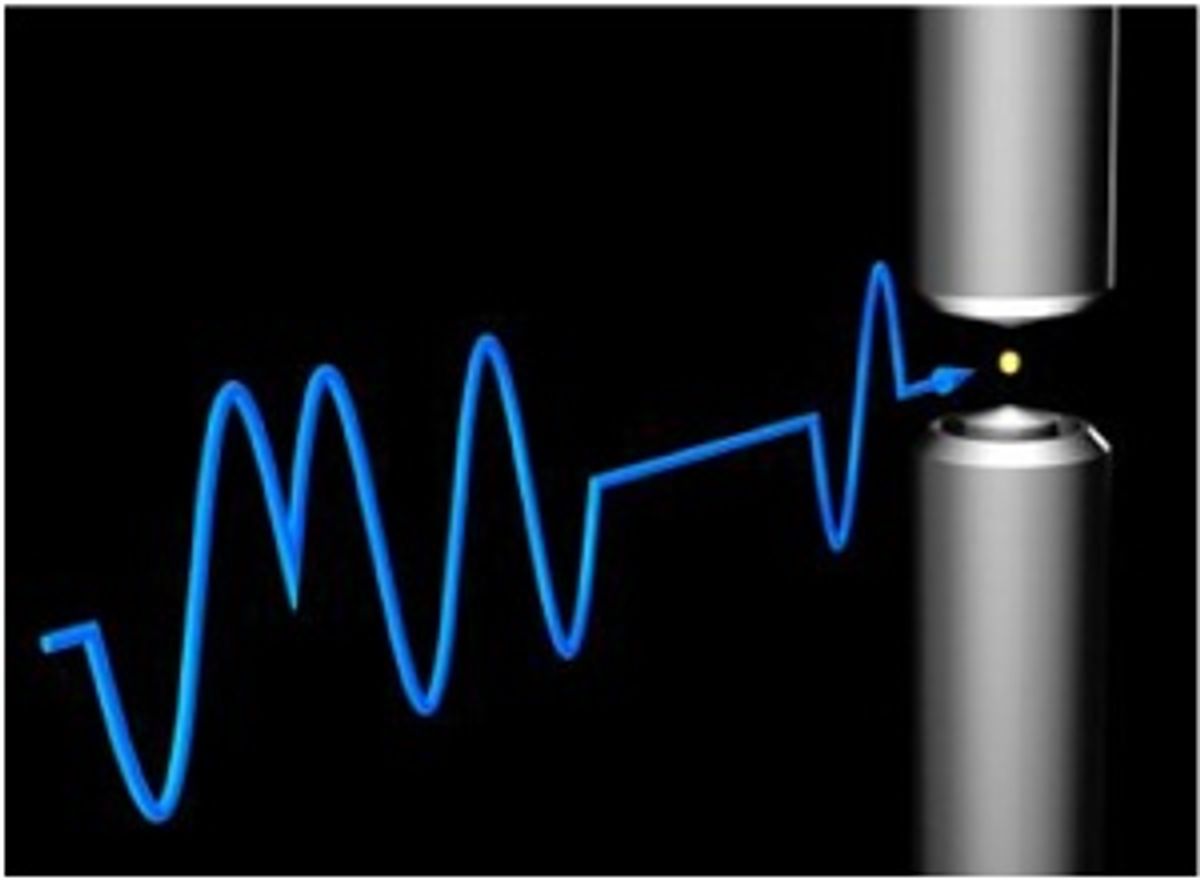The push to engineer ever-more-accurate clocks continues. A group at the Physikalisch-Technische Bundesanstalt (PTB, the German national standards institute) has developed a technique for more accurately measuring the frequencies of photons emitted by promising “clock transitions”—rare energy states durable enough to stick around for sustained probing by ham-fisted humans.
To do this, they refined a technique central to atomic clock technology: the separated oscillatory field (SOF) method, also called “Ramsey excitation" after physicist Norman Ramsey. (Ramsey pioneered the method in the 1950s and developed it into the robust and general metrological approach that won him a share of the 1989 Nobel Prize for Physics.)
The original Ramsey approach uses two spaced pulses of electromagnetic energy. The initial excitation pulse pumps up the system. An intentional pause between pulses allows the elements of the system to settle into “coherent superposition.” Finally, the probe pulse—at the same frequency as the excitation pulse, and precisely in phase with it—“reads” the system. If the captured ion fluoresces, it indicates that the energy was not locked in the clock transition (which doesn’t decay spontaneously), so it’s scored as a 0. If there is no fluorescence, however, then the target transition was excited at that wavelength, and it’s scored as a 1.
Since this is quantum world, the experiment is repeated hundreds of times; the 1s and 0s are added up and averaged, and the result is the excitation probability. The experimenters then vary the frequency by detuning the laser, and repeat the process for a new excitation frequency. Thus, step by incremental step, they build up a chart of excitement probability at each resonant wavelength. Over time, the accumulating data clearly show this allows them to precisely characterize the frequency of the target transition.
Light shift is roughly proportional to the intensity of the stimulating laser pulse. In the past, researchers coped by repeating the experiment with a variety of laser intensities. They then plotted resonant frequency against beam intensity, and extrapolated the line back to zero-intensity to locate the “true” frequency of the target transition.
It’s a cumbersome approach, which requires significant data manipulation and introduces some errors of its own. The PTB researchers have tried to eliminate this backtracking with a method that automatically accounts for light shift and neutralizes it.
They call the approach “hyper-Ramsey spectroscopy” (HRS). This extension of the conventional Ramsey technique essentially “pre-pays” for the light shift, and then cancels it out in the instrument, eliminating the need for calculating light-shift corrections. HRS uses three (rather than two) sequential laser pulses. In conventional Ramsey excitation, the stimulating-frequency grid centers on the expected resonant frequency. In HRS, the central frequency is the expected resonant frequency plus the anticipated light shift.
In HRS, first pulse is the excitation pulse. After a pause comes a “noise-cancelling” pulse (as the researchers put it, the pulse “compensates the dephasing between the atomic coherence and the probe laser field caused by the Ramsey pulses”); it’s the same frequency as the first pulse, but its phase is inverted. There is another, briefer, pause. And then comes the probe pulse, in phase with the initial excitation pulse.
The net effect is that researchers can measure the frequency of the target transition directly. They also reduced the light-shift by four orders of magnitude, pushing it down below the 10-17 level—results that, they say, have significant implications for the future of precision laser spectroscopy and time measurement.
Images: NPL, Teddington, Middlesex, UK. PTB, Braunschweig, Germany.
Douglas McCormick is a freelance science writer and recovering entrepreneur. He has been chief editor of Nature Biotechnology, Pharmaceutical Technology, and Biotechniques.





